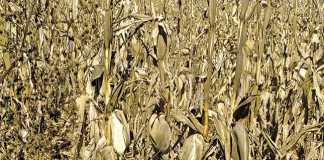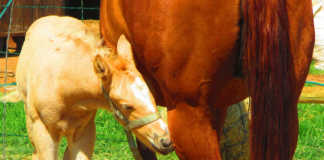There are three forms of equine lymphangitis: sporadic, ulcerative and epizootic. Epizootic lymphangitis is a fungal infection, best treated by a vet. Ulcerative lymphangitis is, thankfully, much rarer. As RR Pascoe and DC Knottenbelt note in the Manual of Equine Dermatology, ulcerative lymphangitis leads to the formation of hard nodules and abscesses, and occasionally, a smelly, greenish discharge.
The more common sporadic lymphangitis is also an unpleasant ailment. Essentially, it is an inflammation of the lymph vessels, particularly in the hind legs. The lymphatic system is made up of lymph nodes and vessels, which are similar to veins. These vessels are full of lymph, the fluid part of blood (not containing red blood cells). The system’s main function is to remove the extra fluid found in the lower legs and prevent infection.
If your horse has a problem with its immune system it could be prone to lymphangitis. A small cut, wound or snake or spider bite, or any sort of foreign body, such as a thorn or sliver of wood, becomes infected. The infection then moves through the layers of the skin and enters the lymphatic system.
Swelling, pain and fever
Once the infection gains access to the lymph vessels, it will spread up the leg causing inflammation. The leg will swell and become extremely painful. The horse is also likely to have a fever and seem depressed and off its food. In the beginning, the lymph vessels appear as thick cords (similar to a tendon or ligament injury). As the disease progresses, the swelling increases hugely. In some cases, it can be so severe that the joints cannot be distinguished.
I have even seen this swelling force fluid (serum) out of the skin due to the pressure. These areas can become dry and form tiny scabs. The lameness that follows will, understandably, cause the horse to refuse to put weight on its legs. Over time, the disease causes scarring in the one-way valves within the lymph vessels, resulting in permanent swelling of the legs.
How to treat the problem
As with any injury or illness, the sooner you administer the correct treatment, the better the outcome. Your vet will want to take a swab to do a bacterial culture. Using the correct antibiotic is very important and injectable antibiotics often work much more quickly, although it can be difficult. I recall seeing a vet in the UK injecting antibiotics into the leg region in the vein and the trouble he had in finding a vein because of the swelling.
The sooner anti-inflammatory drugs can be given, the better. Try to avoid steroidal drugs initially. These will reduce your ability to treat the cause of the infection and they also tend to lead to laminitis. Having said this, steroids are usually very effective if applied at the right time. For additional treatment, make a cream from Hypericum calendula and tea tree oil. Twice daily, soak the leg in salt water for 20 minutes, apply the cream and then bandage with thick padding. This will help minimise further infection and aid in the reduction of the swelling.
Change the bandages every four hours. Cold- hose for 20 minutes after removing bandages. Keep your horse moving to increase the circulation; the more it moves, the less pain it will feel. If you suspect that a puncture wound is the culprit, poultice the area of entry with tea made from slippery elm (Ulmus rubra) and raw honey.
Feed lucerne and parsley, as they are diuretics. Dripping on dimethyl sulfoxide (DMSO) also speeds up healing. A good herbal blood cleanser and immune booster can help prevent this ailment from reoccurring.













